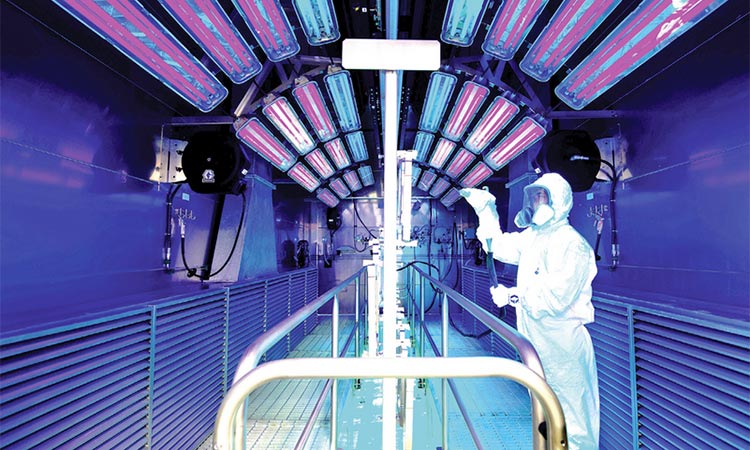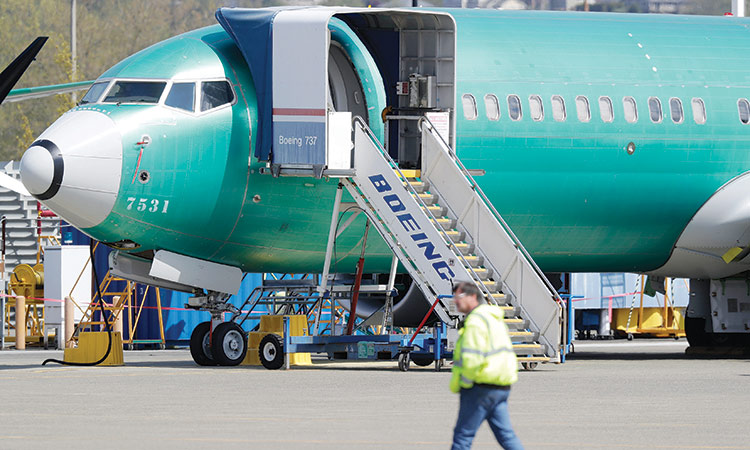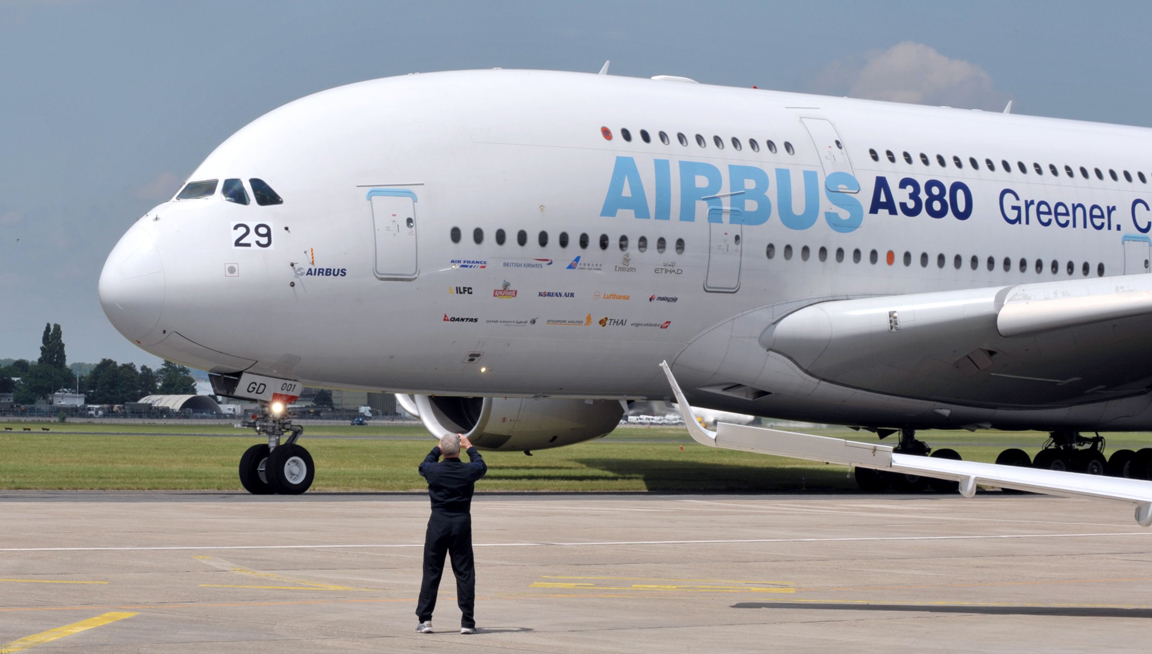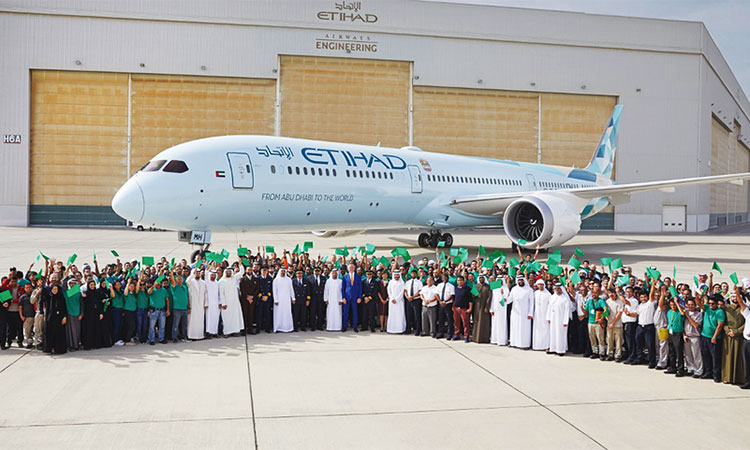Boeing to pay $6.6 million fine to US regulators

Pictures used for illustrative purpose.
Boeing Co will pay $6.6 million to US regulators as part of a settlement over quality and safety-oversight lapses going back years, a setback that comes as Boeing wrestles with repairs to flawed 787 Dreamliner jets that could dwarf the cost of the federal penalty.
Boeing is beginning painstaking repairs and forensic inspections to fix structural integrity flaws embedded deep inside at least 88 parked 787s built over the last year or so, a third industry source said.
The inspections and retrofits could take up to a month per plane and are likely to cost hundreds of millions - if not billions - of dollars, though it depends on the number of planes and defects involved, the person said.
Boeing shares extended losses in the final hour of trading, closing down 5.6%, after Reuters first reported the settlement with the Federal Aviation Administration over the planemaker’s failure to comply with a 2015 safety agreement.
The penalties include $5.4 million for not complying with the agreement in which Boeing pledged to change its internal processes to improve and prioritize regulatory compliance and $1.21 million to settle two pending FAA enforcement cases. “The FAA is holding Boeing accountable by imposing additional penalties,” FAA Administrator Steve Dickson said in a statement.
Boeing paid $12 million in 2015 as part of the settlement.
The planemaker is strengthening processes and operations “to ensure we hold ourselves accountable to the highest standards of safety and quality,” a spokesman said by email, adding that settlement “fairly resolves previously-announced civil penalty actions while accounting for ongoing safety, quality and compliance process improvements.”
Boeing engineers are working to determine the scope of inspections, including whether jets can be used as-is without a threat to safety, two people said. Boeing has not told airlines how many jets are impacted, another person said.
The FAA has been investigating instances of oversight lapses, debris left inside finished aircraft, and managers putting pressure on employees handling safety checks for the FAA, people familiar with the proceedings said.
The FAA has also wrapped into a single investigation three separate 787 defects arising over the last year that have triggered the invasive inspections, the people said. Boeing told the FAA in August 2020 about the latest flaw, involving structural wrinkling in the interior fuselage skin where carbon-composite barrels that form the plane’s lightweight body are melded together.
The defect went unnoticed for months or longer because computerized safeguards that crunch data looking for quality flaws had not been programmed to look for the gaps, a third industry source said.
The 787 production problems have halted deliveries of the jet since the end of October, locking up a source of desperately needed cash for Boeing.
The fuel-efficient 787 has been a huge success with airlines, which have ordered 1,882 of the advanced twin-aisle jet worth nearly $150 billion (74.7 billion pounds) at list prices.
But the advanced production process and sprawling global supply chain caused problems over the years.
As of February, Boeing had fixed the 787 production process causing the wrinkling defect, according to two people familiar with the matter.
However, planes rolled off the assembly line with the flaw for more than a year, at least, continuing even after the flaw was discovered in August 2020.
“It’s difficult to see a definitive fix that is agreeable by the aviation authorities and all going forward,” Boeing customer Air Lease Corp’s CEO John Plueger told analysts on an earnings call Feb 22. “I don’t think that we’re there yet.”
AIRBUS ENGINES: Airbus is working on hybrid-electric propulsion among the options for reducing jetliner emissions, the European planemaker said on Friday.
It disclosed the initiative in a document projecting more than a million tonnes of equivalent CO2 emissions over the life of each current-generation jet, as it became the first planemaker to report so-called “Scope 3” emissions.
Until now, Airbus has mainly publicised hydrogen as the preferred energy source for future airplanes, pledging to introduce the first hydrogen-powered commercial plane in 2035.
But on Friday it said it was also working on hybrid-electric alternatives.
“The company’s work in electric flight has laid the groundwork for our future concept of zero-emission commercial aircraft,” Airbus said, adding it is “now exploring a variety of hybrid-electric and hydrogen technology options”.
Although experts say hydrogen could power relatively small planes to start with and galvanise green investments, it poses challenges because of its volume and the need for a new infrastructure. Rival Boeing has downplayed the idea.
Several industry sources say the leading option for a future replacement to the best-selling 150-seat A320, likely to enter service in the 2030s, involves hybrid-electric power, with hydrogen only likely to power such large airplanes later.
Engine makers are actively exploring open-rotor engines with visible blades using a mixture of traditional turbines and electric propulsion for future replacements to the Airbus A320 and Boeing 737, industry officials told Reuters.
Asked to comment on its hybrid-electric plans, an Airbus spokesman said: “Only a combination of technologies, including hydrogen, will help us aim for zero emission.”







